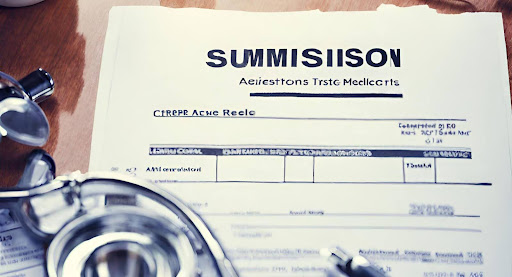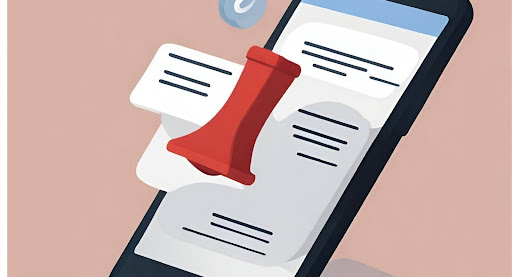
Navigating the complexities of medical billing can be daunting, but understanding the claim submission process is essential for healthcare providers to ensure accurate reimbursement for services rendered. We break down the claim submission process into digestible steps to simplify the procedure and optimize reimbursement.
Step 1: Patient Registration and Eligibility Verification
Before submitting a claim, it’s crucial to register the patient accurately and verify their insurance eligibility. This step ensures that the patient’s coverage is active and valid, minimizing claim rejections due to insurance issues.
Key Steps in Patient Registration:
Collecting Demographic Information: Obtain accurate details such as patient name, date of birth, address, contact information, and any relevant identifiers like social security numbers.
Gathering Insurance Information: Record insurance details including policy number, group number, insurance provider, and the primary insured person’s information if applicable.
Verifying Patient Identity: Implement protocols to verify the patient’s identity to prevent identity theft or fraud. This can include requesting photo identification or utilizing biometric verification methods.
Step 2: Documentation of Services

Accurate documentation of the services provided is the cornerstone of successful claim submission. Healthcare providers must maintain detailed records of patient encounters, including diagnoses, procedures performed, and any additional services rendered.
Key Elements of Documentation:
Patient Information: Start with basic patient demographics, including name, date of birth, insurance information, and contact details. This ensures proper identification and billing to the correct payer.
Encounter Details: Document the date and location of the encounter, along with the provider’s name and credentials. Specify the reason for the visit, chief complaints, and any relevant medical history.
Evaluation and Management (E/M) Services: Include a detailed description of the services provided during the encounter, including examination findings, assessment, and plan of care. Use standardized E/M coding guidelines to accurately reflect the complexity and intensity of the visit.
Step 3: Code Assignment
Assigning appropriate medical codes to each service is vital for claim accuracy. Healthcare providers must utilize the correct set of codes, such as Current Procedural Terminology (CPT) codes for procedures and International Classification of Diseases (ICD) codes for diagnoses, to describe the services accurately.
Optimizing Code Assignment:
To streamline code assignment in the claim submission process, consider implementing the following strategies:
Continuous Education: Invest in ongoing training and education for billing staff to keep them informed about changes in coding guidelines and regulations. Online courses, seminars, and workshops can help enhance their coding proficiency.
Use of Technology: Leverage advanced medical billing software equipped with built-in coding assistance features. These tools can automate code suggestions based on provided documentation, reducing the likelihood of errors and speeding up the coding process.
Documentation Improvement: Encourage healthcare providers to maintain detailed and accurate documentation of patient encounters. Clear, thorough documentation not only supports proper code assignment but also improves patient care and reduces the risk of claim denials.
Step 4: Claim Generation
Once the patient encounter is documented and coded correctly, the claim can be generated using a medical billing software or system. The claim includes essential information such as patient demographics, provider information, date of service, and itemized charges.
Key Steps in Claim Generation:
Patient Information Gathering:
- Collect comprehensive demographic information from patients, including name, date of birth, address, insurance details, and contact information.
- Verify insurance eligibility to ensure coverage for the services provided.
Coding Services:
- Assign appropriate medical codes (CPT, HCPCS, and ICD-10 codes) to accurately represent the services rendered and diagnoses.
- Ensure coding compliance with the latest regulatory guidelines to avoid claim denials and audits.
Documentation Review:
- Review medical records and documentation to ensure they support the services billed.
- Document all procedures, treatments, and diagnoses accurately and thoroughly to justify the medical necessity of services.
Step 5: Claim Scrubbing

Before submission, claims undergo a process called scrubbing, where they are checked for errors or inconsistencies. This automated review helps identify potential issues, such as missing information or invalid codes, that could lead to claim rejection.
The Importance of Claim Scrubbing:
Reduced Errors: Claim scrubbing helps identify and correct errors such as missing patient information, incorrect codes, or invalid insurance details. By rectifying these issues early on, it reduces the likelihood of claim rejections or denials.
Faster Reimbursements: By streamlining the claim submission process, claim scrubbing accelerates reimbursements. Clean claims that meet insurance requirements are processed more quickly, leading to faster payments for healthcare providers.
Improved Revenue Cycle Management: Efficient claim scrubbing enhances the overall revenue cycle management by minimizing disruptions and optimizing cash flow. It allows healthcare providers to focus on patient care rather than dealing with claim-related issues.
Step 6: Submission to Payers
After scrubbing, the claim is electronically submitted to the relevant insurance payer(s). Most payers accept claims electronically, streamlining the submission process and expediting reimbursement.
Understand Payer Requirements:
Before diving into claim submission, it’s crucial to comprehend the specific requirements of each payer. Familiarize yourself with their preferred formats, coding standards, and any unique guidelines they may have. This step ensures that your claims are compliant and have a higher chance of approval upon submission.
Verify Patient Information:
Accuracy is paramount in medical billing. Verify and double-check patient demographics, insurance details, and policy information to prevent claim denials due to inaccuracies. Utilize electronic tools and software for efficient verification processes, minimizing manual errors.
Code Correctly:
Proper coding is the backbone of successful claim submission. Ensure that all procedures, diagnoses, and services are accurately coded using the appropriate code sets, such as ICD-10, CPT, and HCPCS. Regular training and reference materials can help billers stay updated with coding changes and guidelines.
Step 7: Payment Posting
Upon adjudication, the payer issues payment to the healthcare provider for the services rendered. Payment posting involves recording the payment received, reconciling it with the original claim, and updating the patient’s financial records accordingly.
Understanding Payment Posting:
- Payment posting involves recording and reconciling payments received against billed claims.
- It includes posting payments from insurance companies, government payers, and patients.
- The process ensures accuracy in accounting, tracks outstanding balances, and identifies any discrepancies in payments.
Preparing for Payment Posting:
- Gather all necessary documents, including Explanation of Benefits (EOB), remittance advice, and patient payments.
- Ensure that the billing software is up-to-date and compatible with various payment formats.
- Verify patient insurance information and eligibility to avoid payment rejections.
Verification and Validation:
- Match received payments with corresponding claims to ensure accuracy.
- Verify payment amounts, payer details, and patient responsibility against the billed charges.
- Cross-reference EOBs or remittance advice with claim details to identify any discrepancies or denials.
Step 8: Denial Management

In cases where a claim is denied or partially paid, denial management procedures come into play. Healthcare providers must identify the reason for denial, address any discrepancies or errors, and resubmit the claim if necessary to secure full reimbursement.
Optimizing Denial Management:
Preventative Measures:
Educate staff: Train billing and coding staff on current coding guidelines, documentation requirements, and payer policies to reduce errors.
Utilize technology: Invest in billing software with built-in coding validations and claim scrubbing features to catch errors before submission.
Verify eligibility: Confirm patient insurance coverage and benefits before providing services to prevent denials due to coverage issues.
Efficient Claim Submission:
Timely filing: Submit claims promptly within the payer’s designated timeframe to avoid denials for late submissions.
Accurate coding: Ensure that all procedures and diagnoses are coded correctly and supported by adequate documentation to prevent coding-related denials.
Clear documentation: Encourage healthcare providers to maintain thorough and detailed documentation to support the medical necessity of services rendered.
Streamlined Denial Resolution:
Monitor denials: Establish a system to track and analyze denial trends, including denial reasons, frequency, and payer patterns.
Prioritize denials: Focus on resolving high-dollar or frequently occurring denials first to maximize revenue recovery.
Appeal effectively: Develop standardized appeal templates and workflows to streamline the appeals process and increase the chances of successful resolution.
Conclusion:
Understanding the claim submission process is essential for healthcare providers to navigate the complexities of medical billing successfully. By following these optimized steps, providers can streamline the process, minimize claim rejections, and ensure accurate reimbursement for the services they provide. Investing in efficient billing practices not only benefits providers financially but also enhance the overall patient experience by reducing administrative burdens and improving billing accuracy.
Recent Comments